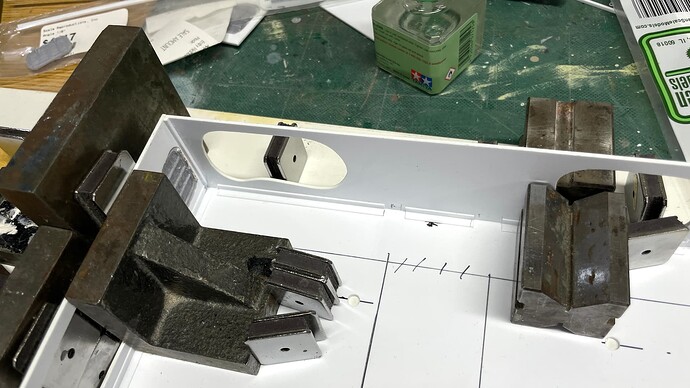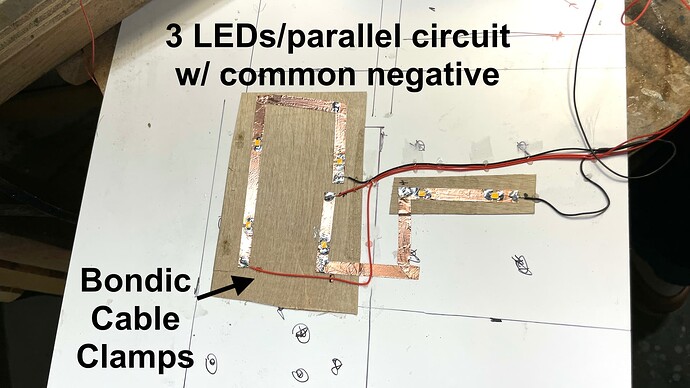Sort of a milestone day… I pretty much finished all the gun house interior work. All that’s left is to drop the shield over top. That could be a nightmare, but I’m optimistic it will go okay (without breaking off any more foot rungs). There’s a lot of images today so bear with me.
First thing I did was change out those 0015" pins holding the trunnion caps with 0.025" pins. I then drilled the holes in the gun receivers to let the aluminum turned trunions set down completely. They were sticking proud of the surface when I attempted assembling it yesterday. I then found that the trunnions needed too much pressure to insert due to cement and paint inside the bearings. I line bored the bearings to match the same openings in the guns and the pins fit perfectly. After assembling I put a little thin CA into the joint to both glue down the caps AND freeze the guns at the level position. They will not be movabable.
I painted the printed 5" powder cartridges and placed some in strategic locations. One is in the right gun’s load tray and two are protruding from the powder hoists outlets in the floor pan. I made a bunch more of them and might have them on the deck randomly as they would be in action.
I mounted the fuze setters control unit after inserting the right gun’s trunnion pin as I anticipated doing.
I added the oil filters on its support and both of the cartridge chutes that direct the hot, spent cartridges out the back door onto the deck behind the gun house.
I then realized that there was no way at all that I was going to be able to drop the shield over the innerds AND STILL be able to get the ventialtion system installed properly. It wasn’t going to happen! I cut the vent unit off of the pipe that went through the ceiling girder and worked with it to install with the rest of the equipment. Even all opened up it wasn’t easy fitting it in. Still attached to the sheild assembly it would have been impossible.
I tried fitting the whole deal on the UHR and it will work okay. I’m still thinking about a way to use fasteners to hold the shield to the innerds since it would preclude having to clamp anything.
Here’s some frontal shots.
While these various parts were drying I was working on cleaning up pile of projectile racks for the magazine. I need 10 of them.
Because of the way I situated them in the printer, the slicer added a ton of tiny supports holding onto the tips of the projectiles which may not have printed well. It was a challenge to clean up and I’m not done yet. Meanwhile, the printer just finished the first batch of three powder container racks that go into the back room. I need five with ammo and four empty that will be in the background so you’ll only see their poles sicking up.
This shows all those tiny supports. For those that will be behind others removing them all may not be necessary. I got faster the more I did.
And those left to do.
I found some O’scale figures that I’m trying to populate the model. The scale is right, the garb is not. There are companies that make terrific figurines in this scale. I may get some. I can also kitbash some of these Woodland Scenics figures to make them WW2 US Navy sailors.
That’s all the work for this week. Y’all have a nice weekend. It’s finally going to stop raining so we’re going to get out of the house tomorrow.
































































































